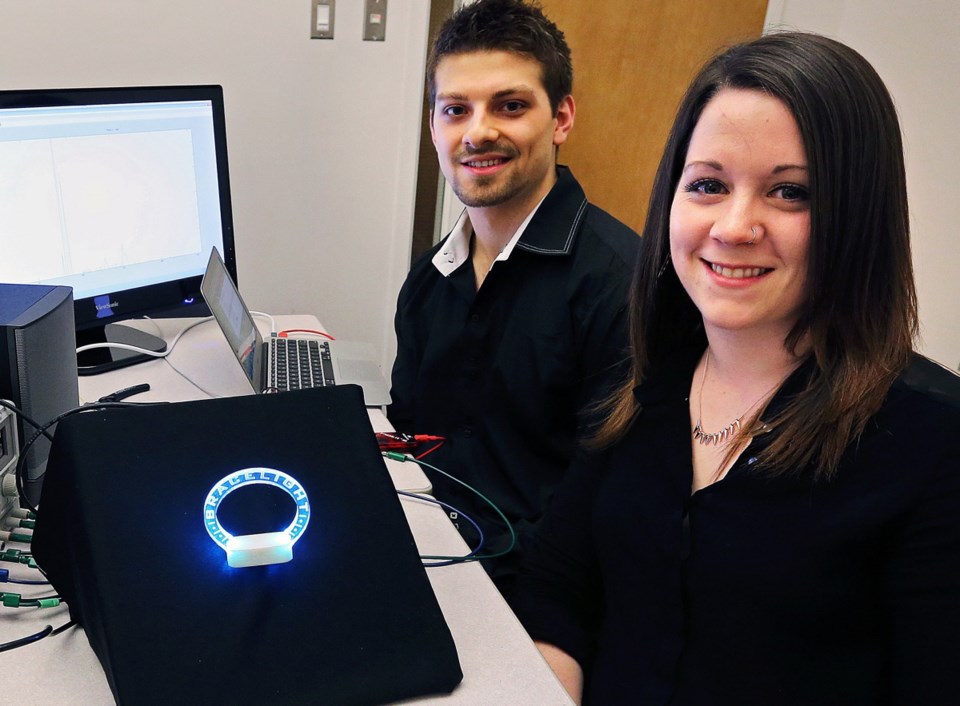Having a heart attack and need to tell your doctor? There’s an app for that.
Need a pulsating wearable light that grooves to the music pounding away in your favourite night club? University of Victoria electrical and computer engineers have come up with one of those, too.
Those products and 20 others were on display Friday as fourth-year engineers presented their final design projects.
It may seem like a grownup science fair — 22 design projects judged by high-tech experts for prizes — but it’s the culmination of four years of academic work and, for some, a possible first step from academia into the marketplace.
Small teams of graduating electrical and computer engineers were given a budget of $120 and 12 weeks to design a product that could be useful.
“This project is a chance to put everything together,” said Kevin Chu, who with fellow student Evan Willey worked on a wireless electrocardiography monitoring system. “You get to use your troubleshooting skills, communication skills, math problems, basically everything you’ve learned to create and make a product.”
The ECG system can record and transmit a patient’s heart readout wirelessly, in real time, to a smartphone which can analyze and re-transmit the data to doctors and family members.
“Multiple courses come into play here,” said Fayez Gebali, chairman of the electrical and computer engineering department. “When you face a project, no one book will teach you, but it’s the collected knowledge learned along the way.”
Computer engineering program director Kin Fun Li said the annual competition piggybacks a fourth-year design course that is meant to get students thinking about the practical application of what they’ve learned.
“I would say 20 per cent of them try to do something with their product [after the competition] and I would say about 10 per cent actually do get something going after graduation,” he said.
Stephanie Fulcher and Erik Hammer are starting to think their project, Bracelight — which uses LEDs to transform music frequencies into a wearable light show — could have legs beyond the competition.
“A lot of people have said they want one,” Fulcher said.
The project adds new dimensions to the engineering program, she said. “You can do a lot of learning in books but the physical experience of building things is an experience you don’t get in many classes.”
Hammer agreed, noting troubleshooting as you experiment is something you learn and get good at the more you do it.
If any of the projects make it to market, they will follow a long tradition of UVic-created ideas.
According to Brent Sternig, director of UVic’s Research Partnerships and Knowledge Mobilization unit — and former CEO of the Innovation Development Corporation that helped get companies into the marketplace — there have been plenty of examples.
“I’d say over the last 15 years, there have been about 75 companies spun out of UVic,” he said, noting more than 60 were the result of work at IDC, while the school’s new Innovation Centre for Entrepreneurs has spun out seven companies with three more on the way.
Sternig also noted the school files as many as 25 patents a year, and enters into about 400 partnerships with industry annually — either faculty working on projects or student internships.
“It’s another way of getting products and ideas out into the marketplace,” he said.



